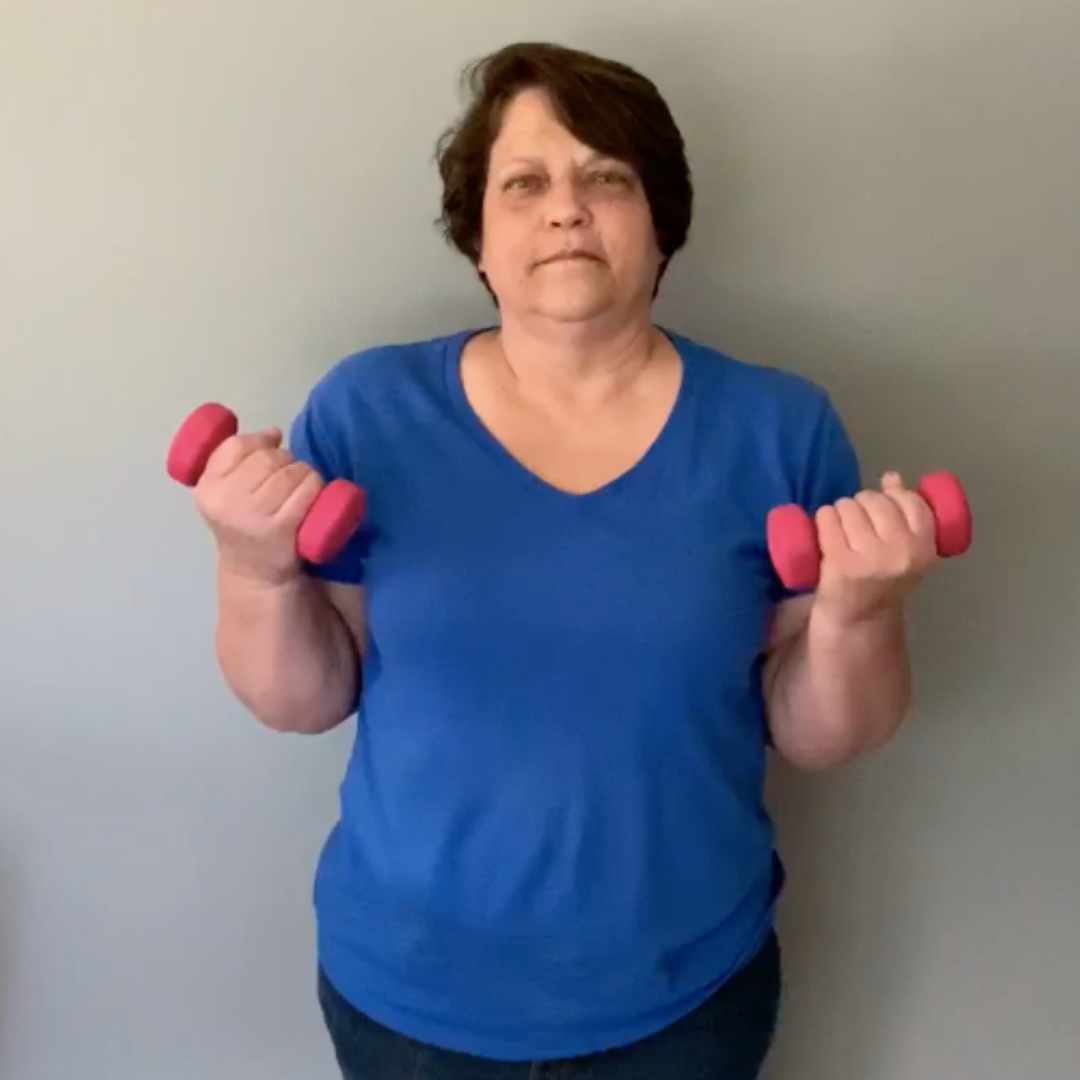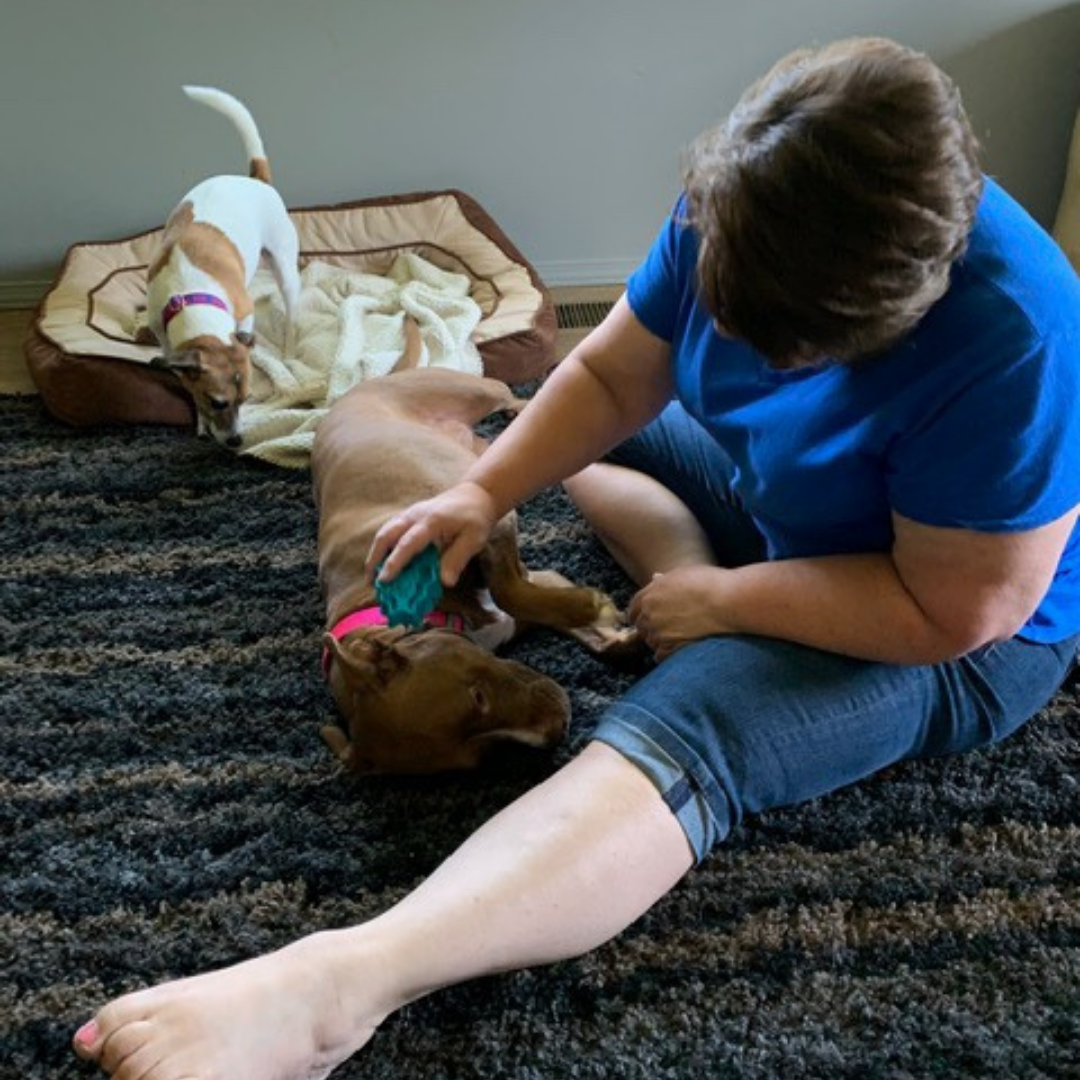- What are the symptoms of a torn bicep and rotator cuff?
- What is the bicep and rotator cuff?
- What’s it like to have surgery on a torn bicep and rotator cuff?
- What is recovery like after bicep and rotator cuff repair?
Kelly S. underwent rotator cuff and bicep repair surgery in March 2020 with Travis Clegg, M.D., a board-certified orthopedic surgeon. Before the surgery, the pain and weakness in her right arm kept her from normal activities such as crafting, walking the dogs, and even working on the computer.
Today, Kelly says, “I feel like myself again.”
What Are the Symptoms of a Torn Bicep and Rotator Cuff?
You can abruptly tear your bicep and rotator cuff or gradually wear them away. In both cases, you will experience significant discomfort in the form of pain, lessened range of motion, stiffness, and tingling.
An acute injury that tears the bicep and rotator cuff will cause a sharp, sudden pain in the upper arm. There may be a snapping or popping sound.
A gradual wear and tear of the bicep and rotator cuff may also cause pain, tenderness, weakness, and cramping when you’re trying to conduct routine tasks. You may even have trouble turning the palm of your hand down or up or lifting even lightweight objects.
Kelly’s injury was gradual and it kept getting worse and negatively affected her job. “It was all I could do to get through the workday because it would cause me so much pain,” she said.
The disruption from the wear and tear injury also affected some of the hobbies she loved so much. Kelly says, “I could not do a lot of my crafts, sewing, and painting; stuff like that. I have four dogs that I love to train and work with and walk but I was feeling so bad I couldn’t do that.”
Kelly decided enough was enough. She met Dr. Clegg and his team who diagnosed a torn bicep and rotator cuff. Kelly says, “I immediately liked him. I immediately felt comfortable and I completely had faith and trust in him.”
Kelly decided to undergo surgical repair of her torn bicep and rotator cuff repair in March 2020. Her treatment was highly successful. Kelly says, “The biggest benefit of having this surgery with Dr. Clegg was the relief of the constant pain and getting the use and strength back in my arm and shoulder.”
What is the Bicep and Rotator Cuff?

The bicep is your upper arm muscle that attaches via tendons to the bones in the shoulder and elbow. The rotator cuff is a combination of four muscles and tendons that hold your upper arm bone, or humerus, securely in the shoulder socket. This physical infrastructure allows your arm and shoulder to work seamlessly together to do routine tasks such as lifting a loaf of bread off the counter or vacuuming the floor. These muscles, tendons, and ligaments can become damaged, along with the bone or the joint. This damage can occur in the individual parts or together. When that happens, everything from getting dressed to brushing your hair can be affected.
In the case of Kelly, she experienced a gradual wearing away of the bicep and rotator cuff. This is a very common injury that is seen in older patients. Over time, the bicep and rotator cuff can degenerate, and the results are very painful, along with significant weakness in the affected area. When both the bicep and rotator cuff are damaged, it exacerbates the weakness, pain, and suffering the patient experiences—over time the person may lose sleep because they can’t find a comfortable position to alleviate the pain. For a time, over-the-counter medications may help patients with their pain, but ultimately, most patients elect for surgery to repair the damage.
What’s it Like to Have Surgery on a Torn Bicep and Rotator Cuff?
A minimally invasive surgical procedure can repair a damaged bicep and rotator cuff. Many patients can go home the same day. During the repair, the surgeon makes several small incisions of about a half-inch to reach the injuries. A small camera called an arthroscope is inserted inside the body to get a visual of the injury. The surgeon can then use plastic screws and sutures to repair the muscle, tendons, and ligaments or other structures causing so much pain.
Patients typically undergo a period of rest, ice, and physical therapy after surgery to repair the bicep and rotator cuff.
Kelly elected to surgically repair both the torn bicep and rotator cuff with Dr. Clegg at his state-of-the-art surgery center. She says, “He explained exactly what would happen in there, what he was going to do to resolve it, what I could expect, and I was ready to do it.” Within a few short weeks, Kelly says, “I just feel great. I can get up and do all the stuff I love. I don’t even have to think about it.”
What is Recovery Like After Bicep and Rotator Cuff Repair?

While every patient has an individualized treatment and recovery process after the surgery Kelly had six weeks of physical therapy over Zoom. She got her full range of motion back immediately and says today, “I feel great. I’m back to all of my fun hobbies and I’m back to feeling productive at work.”
Dr. Clegg, M.D. says, “She was in therapy only three or four weeks and didn’t have much pain after. She really zipped through everything. I feel really happy for her.”
Kelly had a great experience working with Dr. Clegg and his team. She was pleasantly surprised at the level of care she received directly from the doctor. Kelly says, “He called me the day after the surgery and I’ve never had a doctor call me. That said a lot to me.”
Kelly’s positive surgical experience is typical of what you will experience at Dr. Clegg’s practice. She says, “I have recommended Dr. Clegg and I will continue to recommend Dr. Clegg. He really cares about his patients.”
